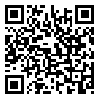Volume 1, Issue 185 (4-2025)
J Except Educ 1404, __(185): 83-83 |
Back to browse issues page
Download citation:
BibTeX | RIS | EndNote | Medlars | ProCite | Reference Manager | RefWorks
Send citation to:



BibTeX | RIS | EndNote | Medlars | ProCite | Reference Manager | RefWorks
Send citation to:
Javaheri- Moghanlou A, Karampour M, Khaleghkhah A, Fathy-Karkaragh F, Jalili- khiavi P. Structural Modeling of the Relationship between Psychological and
Social Adaptation with Existential Thinking, Attachment Styles,
and Perceived Self-Efficacy Considering the Mediating Role of
Psychological Cohesion in Blind and Visually Impaired Students. J Except Educ 2025; 1 (185) : 2
URL: http://exceptionaleducation.ir/article-1-2838-en.html
URL: http://exceptionaleducation.ir/article-1-2838-en.html
Abolfazl Javaheri- Moghanlou1 
 , Minoo Karampour2
, Minoo Karampour2 
 , Ali Khaleghkhah3
, Ali Khaleghkhah3 
 , Farshid Fathy-Karkaragh *4
, Farshid Fathy-Karkaragh *4 
 , Parya Jalili- khiavi5
, Parya Jalili- khiavi5 


 , Minoo Karampour2
, Minoo Karampour2 
 , Ali Khaleghkhah3
, Ali Khaleghkhah3 
 , Farshid Fathy-Karkaragh *4
, Farshid Fathy-Karkaragh *4 
 , Parya Jalili- khiavi5
, Parya Jalili- khiavi5 

1- Mohaghegh Ardabili University, Ardabil, Iran
2- Islamic Azad University
3- Mohaghegh Ardabili University
4- University of Tehran ,farshidfathy1373@ut.ac.ir
5- Zanjan University of Medical Sciences
2- Islamic Azad University
3- Mohaghegh Ardabili University
4- University of Tehran ,
5- Zanjan University of Medical Sciences
Abstract: (341 Views)
Abstract
Background and Purpose: The study of psychological and social adaptation in blind and visually impaired
adolescents is of great importance. Therefore, this study aims to predict the psychological and social adaptation
of blind and visually impaired students based on existential thinking, attachment styles, and self-efficacy
perception, considering the mediating role of psychological coherence.
Method: This study is applied in nature and falls under descriptive-correlational research methods (structural
equation modeling) in terms of its objectives. The statistical population includes all blind and visually impaired
students aged 12 to 18 in schools in Tehran province during the academic year 2024-2025. From this population,
180 individuals were selected as respondents using purposeful sampling. Data collection tools included the
Psychological-Social Adaptation Scale by Durgits, the Sense of Coherence Questionnaire by Antonovsky and
colleagues, the Attachment Styles Questionnaire by Collins and Reed, the Self-Efficacy Scale by Scherer and
colleagues, and the Existential Thinking Questionnaire by Allan and Scherer. For hypothesis testing, Pearson
correlation, multiple regression analysis, structural equation modeling, and path analysis were applied. Data
were analyzed using SPSS 16 and R software.
Results: The results of the statistical analyses showed that the mediating role of psychological coherence in the
psychological and social adaptation based on existential thinking, attachment styles, and self-efficacy perception
of blind and visually impaired students is positive and significant (P < 0.01). Additionally, it was found that the
correlation of psychological coherence with existential thinking, attachment styles, and self-efficacy perception of
blind and visually impaired students is direct and significant (P < 0.01).
Conclusion: Based on the statistical analysis results, it can be concluded that counselors and psychotherapists
can utilize educational and therapeutic packages based on emotional regulation strategies and existential
approaches to improve the psychological and social adaptation of blind and visually impaired students.
Background and Purpose: The study of psychological and social adaptation in blind and visually impaired
adolescents is of great importance. Therefore, this study aims to predict the psychological and social adaptation
of blind and visually impaired students based on existential thinking, attachment styles, and self-efficacy
perception, considering the mediating role of psychological coherence.
Method: This study is applied in nature and falls under descriptive-correlational research methods (structural
equation modeling) in terms of its objectives. The statistical population includes all blind and visually impaired
students aged 12 to 18 in schools in Tehran province during the academic year 2024-2025. From this population,
180 individuals were selected as respondents using purposeful sampling. Data collection tools included the
Psychological-Social Adaptation Scale by Durgits, the Sense of Coherence Questionnaire by Antonovsky and
colleagues, the Attachment Styles Questionnaire by Collins and Reed, the Self-Efficacy Scale by Scherer and
colleagues, and the Existential Thinking Questionnaire by Allan and Scherer. For hypothesis testing, Pearson
correlation, multiple regression analysis, structural equation modeling, and path analysis were applied. Data
were analyzed using SPSS 16 and R software.
Results: The results of the statistical analyses showed that the mediating role of psychological coherence in the
psychological and social adaptation based on existential thinking, attachment styles, and self-efficacy perception
of blind and visually impaired students is positive and significant (P < 0.01). Additionally, it was found that the
correlation of psychological coherence with existential thinking, attachment styles, and self-efficacy perception of
blind and visually impaired students is direct and significant (P < 0.01).
Conclusion: Based on the statistical analysis results, it can be concluded that counselors and psychotherapists
can utilize educational and therapeutic packages based on emotional regulation strategies and existential
approaches to improve the psychological and social adaptation of blind and visually impaired students.
Article number: 2
Keywords: Attachment styles, existential thinking, perceived self-efficacy, psychological cohesion, Psychological and social adaptation
Type of Study: Original Article |
Subject:
مشاوره و مددكاري
Received: 2024/Dec/Tue | Revised: 2025/May/Tue | Accepted: 2025/Feb/Sun | Published: 2025/May/Tue | ePublished: 2025/May/Tue
Received: 2024/Dec/Tue | Revised: 2025/May/Tue | Accepted: 2025/Feb/Sun | Published: 2025/May/Tue | ePublished: 2025/May/Tue
Send email to the article author
| Rights and permissions | |
 |
This work is licensed under a Creative Commons Attribution-NonCommercial 4.0 International License. |


